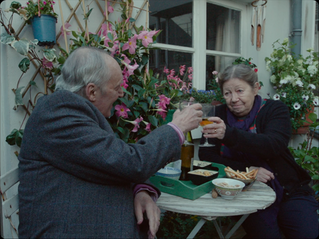Copacabana Mon Amour
- Carolina Azevedo
- Nov 15, 2021
- 3 min read
Rogério Sganzerla, 1970

Rogerio Sganzerla was a revolutionary, a rebel who saw in cinema a way to make reality visible to the eyes of the people, blinded by the hands of censorship. His films were made during the years of military dictatorship in Brazil, a time of political turmoil and extreme violence against anyone who tried to go against it – crimes kept undisclosed with the help of the American Government and the national elites.
Despite the lack of freedom of expression and the recurrent threats on the lives of artists, the 1960s and 1970s were a time of cultural insurgence in the country. Cinematographers, painters, poets, and musicians saw it as their duty to show the people what went on behind the doors of the torture rooms – whilst having some fun getting around senseless censors.
Censorship was easily fooled by witty metaphors, chaotic scenery, and, above all, sex – and that’s exactly what filmmakers such as Sganzerla used to make the most absurd and obvious complaints about the government. One of his most important, humorous, and memorable movies is Copacabana Mon Amour, his odyssey on the life of the Rio de Janeiro masses in a sunkissed paradise of poverty and political, social, and moral disorder.
It tells the story of Sônia Silk and her brother Vidimar, whose lives are torn between the slums and hills of Rio’s outskirts and the middle-class streets where they work – she, as a sex worker, and him, as a doctor’s housekeeper. They roam the streets and bedrooms of the city; a prostitute who repeatedly screams “I am disgusted by poor people” as she looks for food inside trash cans on the streets, and a gay man whose mother thinks he’s possessed by the devil.

Copacabana Mon Amour is a comic remark on the catastrophe that was 1970s Brazil. Its title is a reference to Alain Resnais’ Hiroshima Mon Amour (1959), a parodic procedure that connects the image of Copacabana after the AI-5 – a law passed in 1969 which opened the doors to all forms of barbarism by the State, from open torture and murder to the worst of disclosed censorships – to the image of Japan after the nuclear bombings.
On the one hand, the film serves as a representation of the asphyxiating life lived by the restrained masses of an underdeveloped country whose story is simply that of misery, the aesthetics of poverty, scum, and filth. On the other hand, Copacabana Mon Amour is a ludicrous parody of itself: colorful shots of the cinematographic beaches of Rio followed by characters who roam drunkenly in the middle of the trash, repeatedly screaming nonsense, and dancing to the sounds of the city.
As Sônia spits beer on the sidewalks and Vidimar falls in love with his employee, we see the ordinary lives of people living under their own fantasy worlds, roaming around in the sun, which, as said within the film, doesn’t even let them think. A sun of beautiful misery, a restless metropole of people who have no choice but to get lost in the chaos, filth, and fun of Copacabana. Copacabana Mon Amour is an amusing and comic tale of repression and poverty: as Sganzerla laughs in the face of censorship, cinema is turned into an instrument of the social uprising of those forgotten on the shores of Brazil.








Comments